German shepherd puppies at 4 months: what do they look like and how to care for them?

Sheepdog is a loyal friend and reliable protector. But you need to educate this serious dog from childhood. How to care for a 4 month old German Shepherd puppy? What do these babies look like and what do they eat?
Features of the appearance of a German shepherd puppy at 4 months
At this age, the puppy in the future of a serious and harsh shepherd dog still looks rather awkward. It develops unevenly, and because of this, the legs seem to be strongly elongated relative to the body. The color of the juvenile becomes brighter and more typical for this breed.

4 months for a shepherd puppy is the age when the ears stand upright. The fact is that the cartilage tissue begins to grow stronger just a few months after birth, and the teeth from milk change to permanent ones.
If the ears at this age have not yet become vertical, the owner of the baby does not need to worry.
In some individuals, the characteristics of the organism are such that this phenomenon occurs a little later.
Height and weight of the dog
During the period of active growth, that is, up to about a year, puppies develop very quickly. Before you can blink an eye, they have already waved you up to the waist.
Therefore, it is important to monitor how well they are growing and whether they are not eating too much.
A typical German Shepherd puppy at four months old should weigh between 15 and 20 kilograms. Boys are generally much larger than girls. The height at the withers reaches 55 cm.So, a baby at 4 months from birth is already quite capableGerman shepherd puppies at 4 months: what do they look like and how to care for them?h, but still clumsy.

Deviations from the norm in terms of height and weight should not exceed 15 percent. If the puppy is underweight or, conversely, too large, you should show it to your veterinarian.
Character of a German Shepherd puppy at this age
Age 4 months for a dog is quite difficult. The world opens up for her in all its colors, and what is happening around does not yet fit into her head very well.
In addition to teaching various teams, accustoming to the daily routine and walking, it is worth showing the puppy who is the boss in the house. Forgetting this point will not have a good effect on the dog's future behavior.
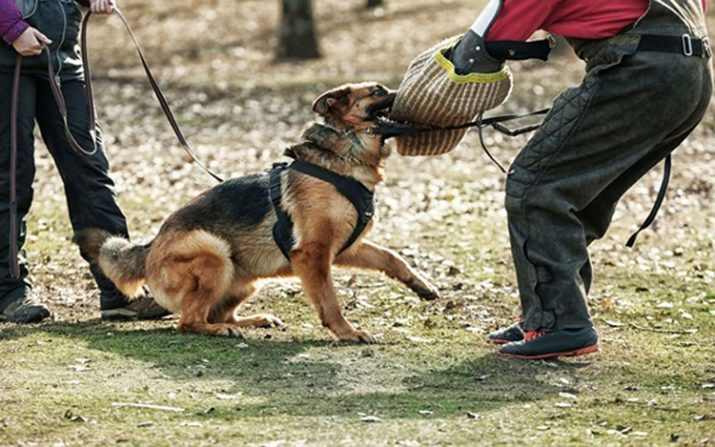
Sheepdog can become arrogant and aggressive, which is unacceptable for such a large animal. The puppy should not be allowed to bite even in jest or bark at any of the family members. The dog needs to be shown who to obey and whom to protect.




At this age, the puppy must already respond to his nickname and know at least a couple of commands. You need to do this every day.
The street and courtyard are great places for training, however, in cold and hot weather, you cannot teach a puppy for more than half an hour so that he does not get sick.
The intonation of the voice for training should be confident, but not formidable.so that the dog is not afraid, but respects its master.
Optimal diet
You need to feed your puppy at 4 months correctly. It is at this young age that the dog builds up muscle mass, and a deficiency of protein and trace elements can provoke dystrophy. The preferred diet should be natural, but premium dry food can be the mainstay of your puppy's nutrition.


Feeding is done three times a day, portions are gradually increased so as not to make a sharp transition from four meals a day.
It is better to choose a specific feeding schedule by the hour, so that the dog gets used to the meal time. This contributes to its better assimilation and future correct habits. If you do not follow the regime, the dog may be malnourished or, conversely, overeat.
The feeding area should be constant so the puppy knows where the food is and does not carry food scraps around the house. The volume of all servings should be no more than 1.5 liters. One serving is 300-400 grams.
The temperature of the food should be warm (about 40 degrees). It is unacceptable to give food from the refrigerator or just cooked.
Baby's diet
The diet of a four month old German Shepherd puppy should include meat, vegetables, cereals and dairy products. It is this kind of nutrition that will help the dog grow up healthy and strong.
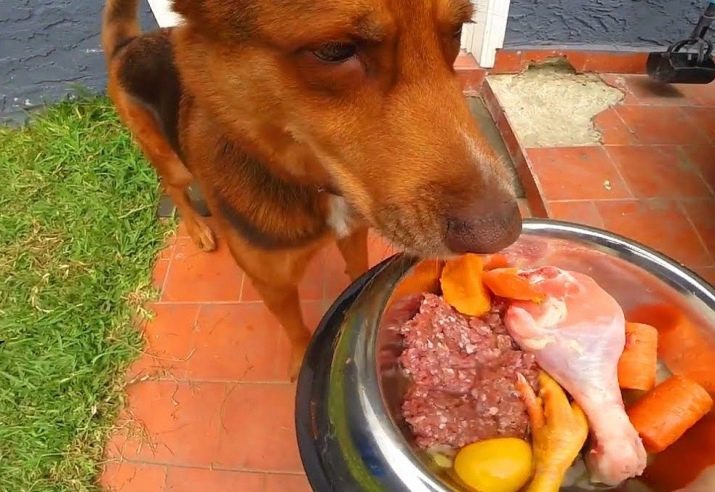
Your dog needs about 400 grams of lean meat per day, preferably turkey or beef. Cereals are boiled in water without adding salt and served with meat or vegetables.
Flavor the daily portion of porridge with two tablespoons of vegetable oil. The amount of dry cereals per day is 100-200 grams. Vegetables are essential for the stable functioning of the puppy's gastrointestinal tract and contain many vitamins and minerals. They should be given boiled or baked. Zucchini, carrots, tomatoes, greens are perfect. From fruits, you can let a young dog feast on a slice of apple or dried apricots.
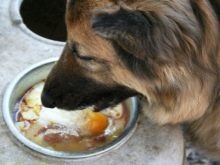


You can give one chicken egg and a glass of kefir or a pack of cottage cheese per day. Such foods make up for the lack of calcium and beneficial bacteria. In addition, they are used as an additional source of protein. Sometimes, about once a week, you should include a serving of liver and fish in your dog's diet.

This food is rich in B vitamins, which is very important for the formation of a healthy nervous system.
Prohibited are flour products, sweets, potatoes and corn (their starch is poorly absorbed), salted vegetables, fried foods. All this can cause a malfunction in the puppy's gastrointestinal tract and serve as the beginning of the development of diseases.
Dry food as an alternative to natural food
A four-month-old puppy can already be fed dry food. They can replace one of the meals or gradually completely replace their usual food, which is undesirable for up to a year.
If there is an urgent need to translate into dry food, then you need to choose only the premium class. It is expensive, but it contains the optimal amount of proteins, fats and carbohydrates, which is so necessary for a small pet.
Dry food must also be fed not on demand, but in accordance with the regime.
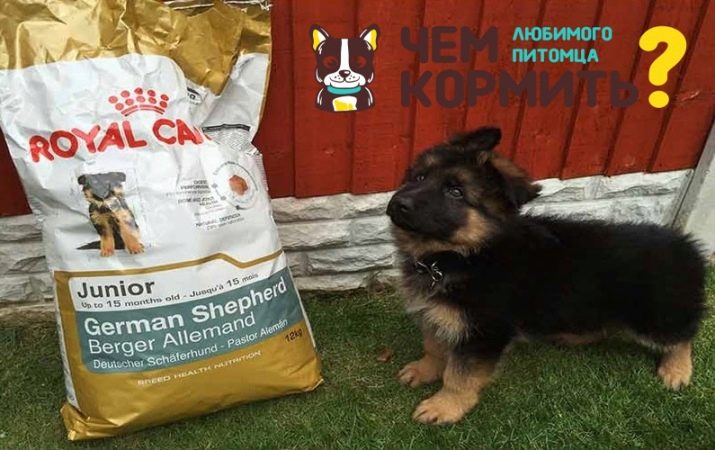
Serving size by age is always printed on the back of the pack, and this is the policy to follow, at least at first. Dry food makes you thirsty, so the puppy should always have a bowl of clean drinking water available.
Vitamin Supplements
The growing body of a German Shepherd puppy requires a high content of vitamins and minerals in its diet. To be one hundred percent sure that these substances are enough, you can use supplements.
A four-month-old puppy can additionally be given calcium, glucosamine and phosphorus supplements.
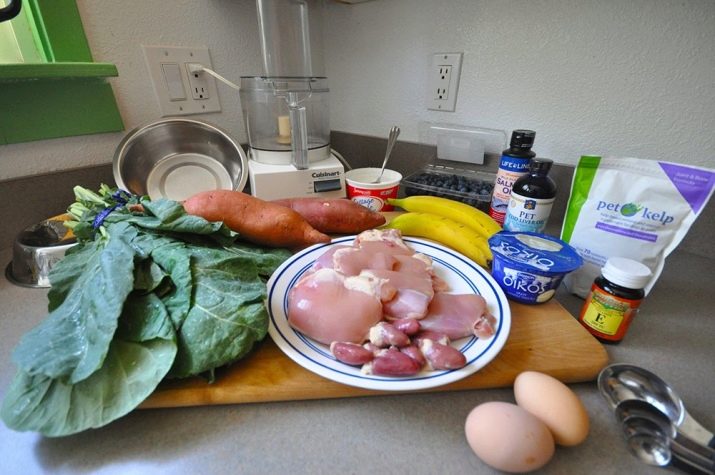
Vitamin A is also a necessary element for the formation of strong immunity.
First of all, it is necessary to diversify the pet's diet as much as possible and only then find out from the veterinarian what vitamin complexes can be purchased for the puppy.
Care
At this age, special attention should be paid to the puppy's teeth. At four months, he begins to change milk teeth for permanent ones, and this is fraught with the development of inflammation and other problems. To prevent these negative phenomena, you can buy the doggie special phosphoric bones or brush his teeth at least a couple of times a month with a special toothpaste purchased from a veterinary pharmacy.
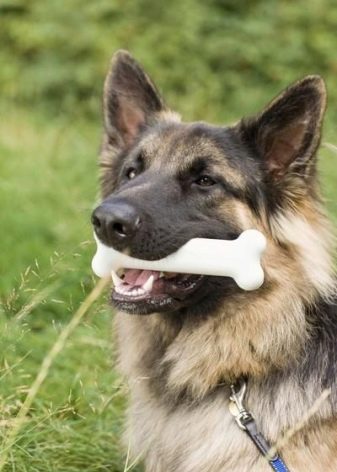
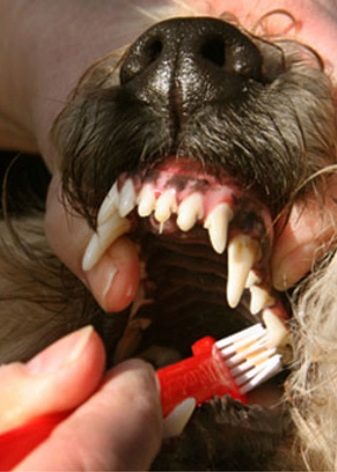
Ears at this age become erect for many, but for some they remain in a supine position. So that dirt does not accumulate there and an infection does not develop, you can rinse them with a chlorhexidine solution once a month. Periodic examination of the auricles is necessary to prevent redness and suppuration.
The puppy does not need frequent bathing. The procedure removes the protective fat layer from the surface of the coat, which is very bad for the dog's body.
You cannot bathe a German Shepherd Dog more often than 4 times a year, which means that at the age of four months a puppy can be bathed a maximum of two times.
Following these recommendations, you will grow from a four-month-old German Shepherd puppy into a healthy, cheerful dog, which will become your reliable friend and helper.
You can find out about the features of the breed from the video below.






































